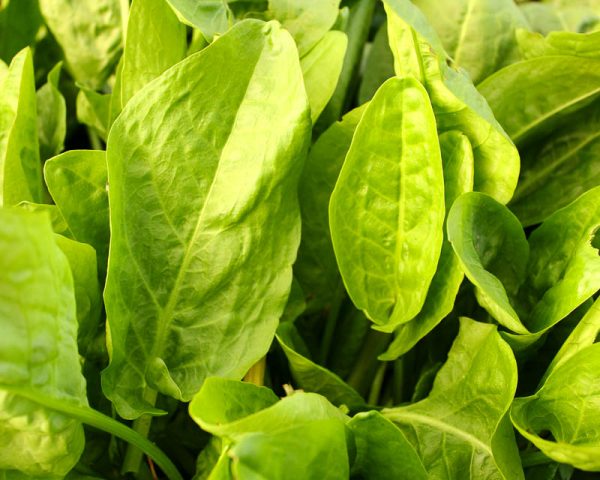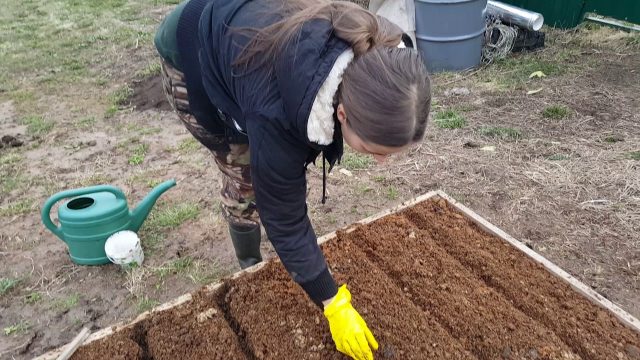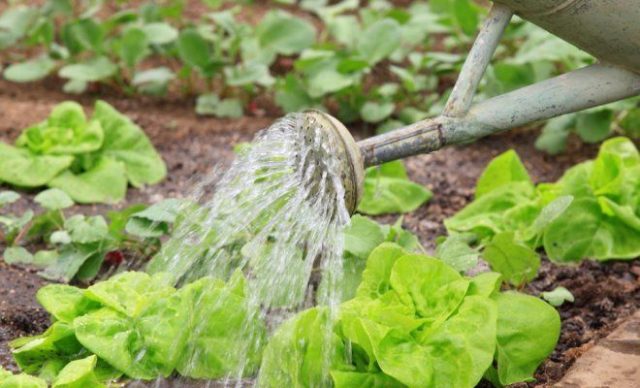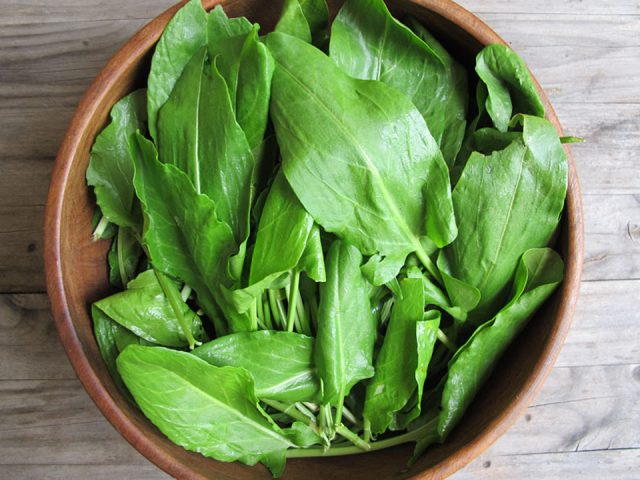Content
Planting and caring for sorrel in the open field is not difficult. It is considered one of the simplest garden crops, sometimes runs wild, and on acidic soils it can grow as weed... In spring, sorrel is one of the first to start growing green mass.
Today, the first green leaves are mainly eaten, replenishing the lack of vitamins and microelements after winter. Then culture is most often safely forgotten until the next season. And more recently in Russia, cabbage soup, side dishes, and baking stuffing were prepared from young greens. Sorrel is often used in modern French cuisine - it is put in omelets, sauces. The most popular is "health soup" - potage sante.
Sorrel description
As a food crop, Sour or Common Sorrel (Rumex acetosa), belonging to the Buckwheat family, is grown. It is a food, medicinal and technical perennial herb. Depending on the variety and growing conditions, it reaches a height of 15-40 cm, and together with a flower arrow - 100 cm.
The plant has a taproot with a large number of lateral processes. The stem is ascending, simple or branched at the base. If the leaves are constantly cut off and not allowed to bloom, it will be short and almost invisible. The sorrel that receives excess fertilizing, especially phosphorus, or left without pruning, shoots an arrow, which makes the stem elongate.
Leaves up to 20 cm, spear-shaped, located on long petioles. At the top of the stem, they have a lanceolate shape and a torn film socket is formed at the attachment point. Leaves located directly on the shoot are sparse, small, sessile.
In July-August, unremarkable greenish or reddish flowers appear, collected in a loose panicle. By September-October, small shiny seeds ripen, resembling a brown triangular nut.
The most popular varieties are called spinach. They are distinguished by large leaves, a high content of carotene and vitamin C. Spinach sorrel contains 1.5 times more proteins than ordinary sorrel, and 3 times less acids.
When to plant sorrel in open ground with seeds
In one place, the culture grows from 3 to 5 years. In the first year, it gives a small harvest, so it makes sense to start a new bed before removing the old one. The timing of planting sorrel can be chosen at your own discretion. Sowing seeds in open ground is carried out in early spring, as soon as the snow melts, in summer and late autumn in regions with cool and temperate climates.
What soil does sorrel like
Unlike most garden crops, sorrel prefers acidic soils. With a slightly acidic reaction of the soil, it also grows well. On neutral, development is slow - the leaves become small, the yield will be small. But sorrel is not the kind of green that is eaten daily and in large quantities.If it is not supposed to bake pies with it or freeze it for the winter, a dozen bushes are usually enough for their own consumption, so gardeners rarely think about acidifying the soil with a neutral reaction.
But if you need a lot of greenery, for example, for sale, and the acidity of the soil "does not reach" the requirements of sorrel, it is increased artificially. For this, horse (red) peat is used. It also increases the permeability of the soil and improves its structure.
The plant will give the greatest yield on fertile soils rich in organic matter. But for your own consumption, it is not necessary to specially enrich the beds with humus or compost. They are brought in only if you really need a lot of greenery, or there is enough organic matter on the farm for all crops.
How to plant sorrel seeds in the ground
The easiest way to plant sorrel in the spring is to divide the bush into several parts. Here are just the most delicate and delicious greens you can get by sowing seeds in open ground.
What to plant next to sorrel
Sorrel is planted next to such crops:
- between the bushes of gooseberries, black currants;
- along the edge of the raspberry tree;
- next to garden strawberries;
- from vegetable crops, joint planting with radishes, carrots, cabbage is possible;
- only mint and lemon balm will feel good from spicy-aromatic plants next to sorrel.
You can not plant a crop near:
- legumes - they mutually oppress each other;
- tomatoes;
- any spicy herbs other than those indicated above.
Landing site preparation
A garden bed for planting sorrel in open ground with seeds must be prepared in advance. Ideally, the site is dug up and allowed to settle for 2 weeks. But it is not always possible to do everything according to the rules due to lack of time or other reasons. Then the garden bed intended for sorrel is loosened and watered, and the next day the seeds are sown.
For digging, sour peat and organic matter are added, if necessary. Humus and compost enrich the soil with essential nutrients. If the soil is poor, and there is no excess organic matter, you will have to use mineral fertilizers. They should be free of phosphorus, as this substance promotes shooting. Nitrogen can be given in any form, but ash rich in potassium cannot be added under the sorrel - it deoxidizes the soil.
Seed preparation
It is not necessary to prepare sorrel seeds for planting. They sprout at a temperature of + 3 ° C, although + 20 ° C is considered optimal. In early spring and late autumn crops, seed preparation can lead to the fact that they will germinate at the wrong time, and the seedlings will die.
It is possible to soak and stimulate the planting material during late spring, summer planting and growing sorrel under a film cover or in a greenhouse. Then the gentle shoots are no longer afraid of weather disasters.
You can grow sorrel through seedlings, but it does not make sense.
How to plant sorrel correctly
Sowing sorrel is carried out on previously prepared beds. First, shallow furrows are made, spilled abundantly with water. Seeds are rarely sown and 2 cm of soil is covered. Additional moisture is not needed, there will be enough moisture in the soil for germination of seedlings.
The distance between the rows is about 15-20 cm. For 1 square. m plantings consume about 1.5 g of seeds.
Is it possible to transplant sorrel
If necessary, the plant can be transplanted or transferred to another place. It easily multiplies by division in spring or autumn, quickly takes root. But the culture is easy to grow from seeds, and the greens of young plants are much tastier than those plucked from an old bush.
It makes sense to propagate rare or decorative varieties by division.This should be done in the spring, as soon as the sorrel begins to grow, in late summer or early autumn, after the heat subsides.
- An old bush is being dug up.
- Shake off excess soil from the roots.
- With the help of a sharp knife, it is divided into several parts, removing old, diseased or damaged areas by pests.
- Shorten roots that are too long.
- In the prepared soil, shallow pits are made at a distance of 10 cm from each other. The rows should be 15-20 cm apart.
- Delenki plant, compact the soil, water abundantly.
How long does sorrel rise
When sowing dry seeds and temperatures above + 3 ° C, sorrel begins to sprout in 2 weeks. If you build a film shelter, the first shoots will appear in 5-8 days. Sorrel will also hatch faster if you soak the seeds in a growth stimulator or ordinary water, but not in early spring or late autumn plantings.
Sorrel care
Growing sorrel and taking care of it in the open field does not take much time. Perhaps this is the simplest garden crop that can be planted even in partial shade, and only harvest. But if you give the plant minimal care, you can provide yourself with fresh vitamin greens from early spring to late autumn. It is used for salads, soups, freezing and baking.
Thinning of seedlings
An important step in planting and caring for sorrel is the thinning of the seedlings. No matter how hard gardeners try to sow seeds in open ground, some of the young plants will still have to be removed.
Bushes should not grow close to each other - so they cannot develop normally and it will not work to get a high-quality harvest. With a thickened planting, the nutritional area decreases, the leaves overlap each other's light, favorable conditions are created for the development of diseases and the reproduction of pests.
As soon as 2-3 true leaves appear, the seedlings break through, leaving 5-10 cm between the bushes in the rows. The distance depends on the nutrient content of the soil and the variety.
Watering and feeding sorrel
Sorrel is not classified as a drought-resistant crop, but even in the south, planted in partial shade, it is able to withstand hot summers. Of course, the plant needs to be watered several times per season, but it needs more soil loosening than water. With a lack of moisture, sorrel is unlikely to die, but its leaves will become small and tough, the young will stop growing even after complete pruning.
In order for a lot of greenery to form, in early spring the culture is fed with nitrogen, no matter whether it is of mineral or organic origin. The procedure is repeated after each mass trimming. In late August or early September, the bushes are fertilized with potassium and no longer give nitrogen. In this case, ash cannot be used, since it reduces the acidity of the soil.
Phosphorus should be excluded from the sorrel “diet” altogether - it promotes flowering. As soon as the arrow appears, young leaves stop forming and all the plant's forces are directed to the formation of seeds.
If you do not fertilize the sorrel at all, it will still produce a lot of greenery in the first year after planting. In subsequent seasons, only the spring collection of leaves will be satisfactory.
Loosening and mulching
Loosening the soil is an important stage in the care of the crop. It needs to be done regularly to allow the sorrel root system to get enough oxygen, prevent weeds and reduce the amount of watering.
Mulching the beds is optional. For the culture itself, this does not really matter, but it can make it easier to leave. It is best to use sour peat - it brings the soil reaction to the requirements of sorrel. You can cover the ground with paper, humus. Some gardeners plant crops on black agrofibre.
Removing flower arrows
Flowering depletes sorrel, promotes root aging, and prevents the formation of young leaves. Arrows are only left if they want to get their own seeds.For this, several of the best bushes are chosen, since it simply does not make sense to allow all plants to bloom.
On other plants, the arrows are removed as soon as they appear. At the same time, it is better to cut them off, and not to pick them off by hand.
How to treat sorrel from pests
Despite the high acid content, the crop has its own pests:
- sorrel aphid, sucking juice from leaves;
- sorrel leaf gnaw;
- sawer caterpillars.
Among the diseases should be highlighted:
- downy mildew of sorrel, which appears as a white bloom on the leaves;
- rust, in which brown spots appear on greens;
- decay resulting from overflow, especially on dense soils.
It is impossible to solve problems using ash, as many sources advise - when this substance, invaluable for most crops, is added, the soil deoxidizes, which harms the sorrel. Soap solution, the use of which is already questionable, is pure alkali, only diluted with water.
Although the culture is oppressed by sorrel pests, and the fight against them is troublesome, the use of chemical agents is not recommended. It is better to carry out the processing with infusion of garlic, wormwood, hot pepper. Diseases are treated by spraying planting with phytosporin.
As a preventive measure, you can advise:
- adjust watering, sorrel does not need a lot of water;
- loosen the beds regularly;
- thin out the landing.
Harvesting
Sorrel is rich in citric and malic acids, which give it a sour taste, proteins, potassium, iron and vitamin C. The first green leaves that appear in early spring are especially valuable.
It is because of the presence of oxalic acid in the greenery that many gardeners bypass this unpretentious and early growing culture. But they forget or simply do not know that young leaves completely recycle the harmful substance during the growth process. Acid accumulates exclusively in old, hard and coarse leaves, which are easy to distinguish from soft, tender fresh leaves.
Over the summer, the bushes need to be cut off completely twice. Removing old leaves stimulates the constant emergence of young leaves, which allows you to consume vitamin greens from early spring to late autumn.
You can simply pick off the young sorrel growing in the center of the rosette as needed. However, remember to remove and discard old leaves on the compost heap.
With intensive cultivation from 1 sq. m per season they collect 2-2.5 kg of greenery. The crop gives the greatest yield in the second and third years after germination.
15
What can be planted after sorrel
After sorrel, you can plant any crops, except for other greens and plants belonging to the Buckwheat family.
Conclusion
Planting and caring for sorrel in the open field will not cause trouble even for the laziest gardener. You can just plant a dozen bushes and eat the first tender leaves in early spring, when the body, more than ever, needs vitamins and minerals. Then other crops will arrive, and sorrel can be forgotten until next spring.






















